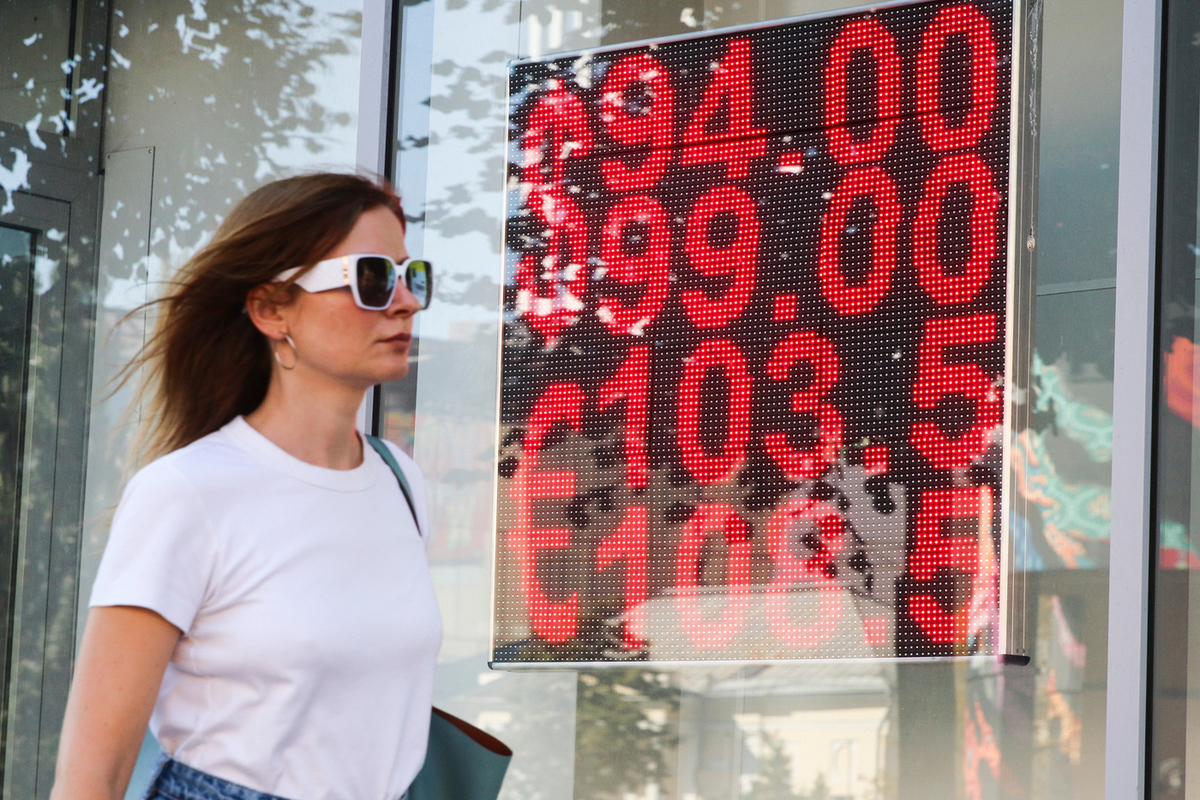The euro has exceeded 100 rubles: the new currency reality of Russia
[ad_1]

Will the dollar soon reach a three-digit level: experts made a forecast
Before the holidays, something happened on the currency exchange that experts had been waiting for for several days. The euro has officially entered triple digits, rising in ruble terms to its highest level since the beginning of the year. The official euro exchange rate was set by the Bank of Russia at 100.44 rubles. And during trading the day before, the rate rose even higher – to 100.8 – 100.9 rubles. Does this mean that the euro will not return to the double-digit level and will the dollar, which is currently trading around 93, soon follow the “European” into the hundred-ruble haven?
Exchange players’ assault on the 100-ruble line by the “Europeans” is not surprising. Over the past month, the Russian currency has fallen in value by more than five percent – slowly and smoothly losing pennies every day. This is how the euro reached the three-digit level. At the same time, according to the chief researcher at the Institute of Economics of the Russian Academy of Sciences, Doctor of Economics Igor Nikolaev, 100 rubles per euro is rather a psychological threshold for the population, but for stockbrokers and financiers it is not so important: they are not worried about the magic of round numbers, but the dynamics of indicators.
But there are questions about exchange rate dynamics. In Russia, the mandatory sale of foreign currency earnings by exporters continues to operate, and the Central Bank recently kept its key rate at a very high level – 16%. All this, theoretically, should have worked to strengthen the ruble, but, contrary to theory, it continues to weaken. The question arises – why?
The experts interviewed by MK give several options for answering it. According to Freedom Finance Global analyst Vladimir Chernov, the euro rose above 100 rubles, firstly, against the backdrop of falling world oil prices, secondly, due to a reduction in our country’s oil and gas revenues, and thirdly, due to tightening sanctions The European Union and the United States, making it difficult for domestic exporters to make payments to foreign partners. Although there have been worse times for the euro. So, last year its rate jumped from July to October in the range from 102 to 110 rubles.
By the way, Chernov expects that after the holiday the ruble will strengthen its position against both the euro and the dollar. The analyst explains this by the monthly peak of the tax period occurring in the last week of February, which is traditionally accompanied by increased demand for rubles from domestic companies. Indeed, at the end of this month (February 28), Russian raw materials companies must pay mineral extraction tax and VAT, and in total these tax payments amount to about 2 trillion rubles. Traditionally, for this purpose, companies sell their foreign currency earnings on the stock exchange, “along the way” strengthening the ruble.
Managing partner of B&C Agency Ivan Samoilenko also agrees with his colleague regarding the reasons for the current weakening of the ruble. He believes that at the moment the greatest pressure on the dynamics of the national currency is the expectation of new packages of sanctions from the EU and the USA. Particularly painful for the domestic financial market are secondary sanctions from the United States, which have already led to some banks in China, Turkey, India and the UAE ceasing cooperation with Russian financial institutions. All this negatively affects the ruble exchange rate. As well as the fact that at the end of last year the overall decrease in export revenues was about 27%.
The expert expects that the dollar will also gradually grow and reach the 100 ruble mark by the end of the first quarter or at the beginning of the second quarter of 2024. And the cost of the euro by that time will approach 110 rubles. “These are the exchange rates that will become our reality this year,” the analyst concludes.
But Igor Nikolaev, for his part, believes that now the euro will not stay at the 100-ruble level and will quickly “go back” to a double-digit number. But not just for a short time, but reliably and long-term it will exceed 100 rubles closer to summer.
Well, what about the dollar? Will he follow the example of his European “colleague” and also exceed 100 rubles? And how quickly can this happen?
Financial analyst Vladislav Antonov from BitRiver believes that it is unlikely that the “American” will reach the three-digit mark in February. “Before the presidential elections in March, the authorities are unlikely to allow a sharp weakening of the ruble,” the analyst points out. “They intend to extend measures on the mandatory sale of export proceeds, supporting the supply of currency. Rising oil prices due to fears of disruptions in the supply of “black gold” will also support the ruble.”
According to Antonov, a more realistic scenario is a weakening of the ruble to 100 per dollar by the end of this year. The key risks here are the imposition of negative geopolitical and macroeconomic trends (such as an increase in the Russian budget deficit and a decrease in oil prices), and the subsequent easing of the Central Bank’s monetary policy, the expert says.
[ad_2]
Source link






